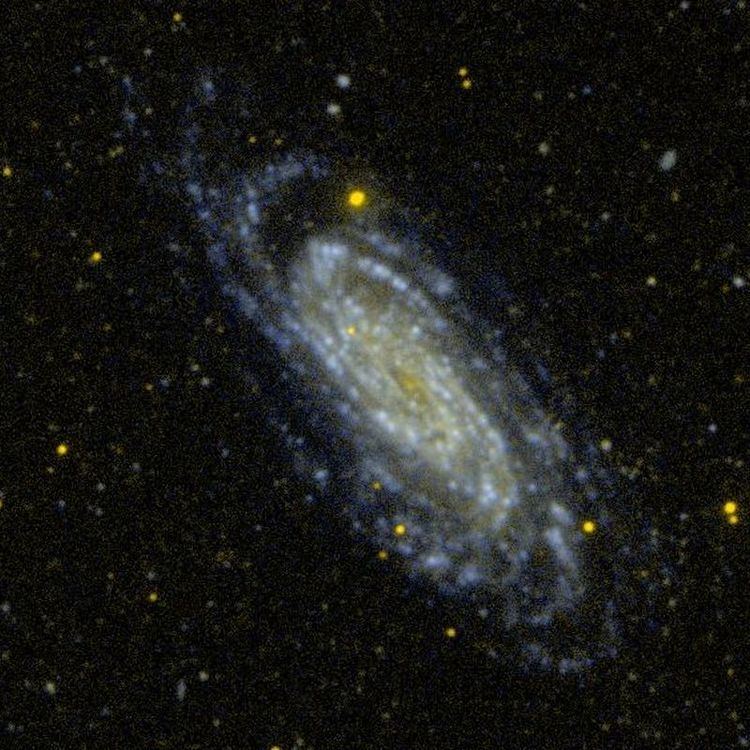Right ascension 10 19 54.99 Redshift 0.00227 Type SB(rs)c Magnitude 10.3 Apparent magnitude (V) 10.3 | Declination +45° 32′ 58.88″ Distance 47 Mly Apparent size (V) 8′.5 × 3′.3 Constellation Ursa Major | |
 | ||
Similar NGC 3184, NGC 3938, NGC 2976, NGC 2841, NGC 4536 | ||
NGC 3198, also known as Herschel 146 is a barred spiral galaxy in the constellation Ursa Major. It was discovered by William Parsons, 3rd Earl of Rosse (Lord Rosse), sometime before 1850.
Contents
NGC 3198 is located in the Leo Spur, which is part of the Virgo Supercluster, and is approximately 47 million light years away.
Supernovae
Two supernovae have been discovered in NGC 3198. SN 1966J, a Type Ib supernova, and 1999bw, which was significantly fainter than expected when first discovered, and has been classified a Type IIn supernova.
Extraplanar Gas
Observations made with the Westerbork Synthesis Radio Telescope detected for the first time the presence of extraplanar gas. The extraplanar gas makes up approximately 15% of the total atomic hydrogen (HI) mass of the galaxy.
Cepheids
NGC 3198 was one of 18 galaxies targeted by the Hubble Space Telescope (HST) Key Project on the Extragalactic Distance Scale, which aimed to calibrate various secondary distance indicators and determine the Hubble constant to an accuracy of 10%. The type and orientation of NGC 3198 made it suitable for these measurements.
The Wide Field and Planetary Camera 2 (WFPC2) of the HST was used to measure the magnitudes of 52 Cepheid variables, and the resulting distance modulus corresponded to a distance of 14.5 Mpc (47 million light years).
